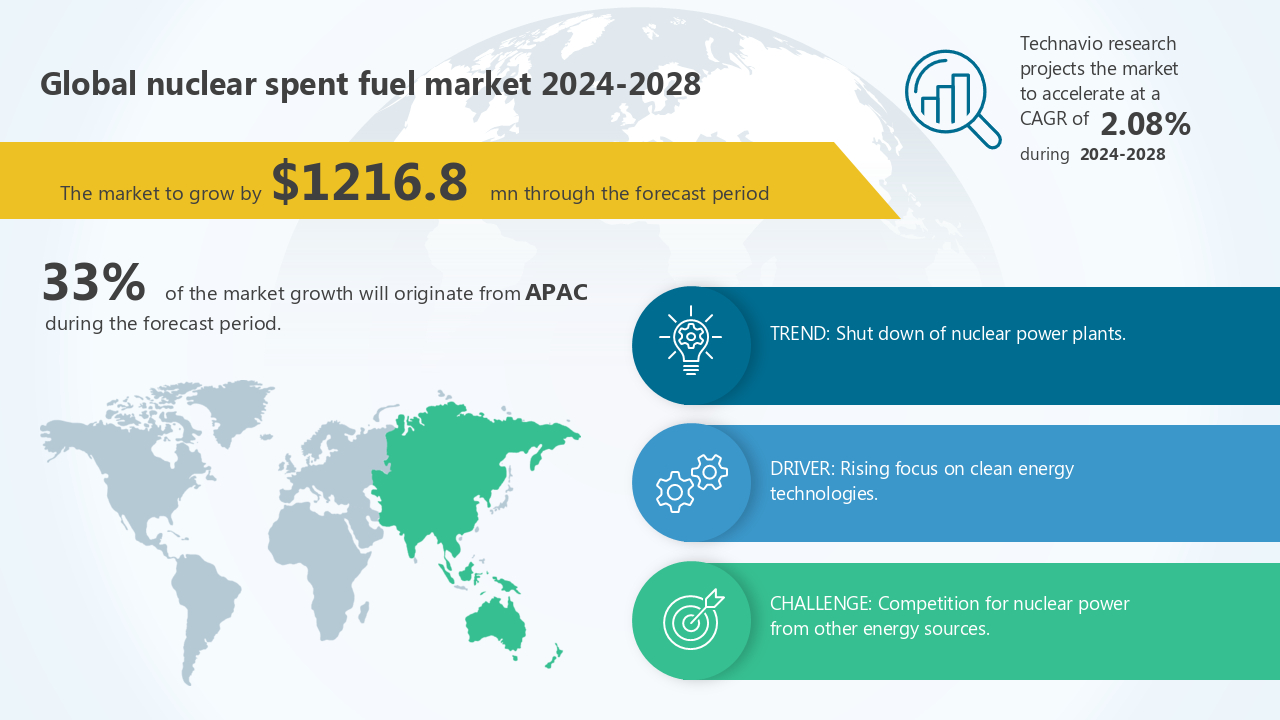Nuclear Spent Fuel Market 2024-2028: Size and Competition for nuclear power from other energy sources; growth driven by the Type, Some of key Companies Positioned Strategically
The nuclear spent fuel market size by Type (Wet storage and Dry storage) and Geography (APAC, Europe, North America, Middle East and Africa, and South America), is forecast to increase by USD 1216.8 million. The market is expected to grow at a CAGR of 2.08% between 2024 and 2028.
- In the global energy landscape, renewable sources such as geothermal, solar, wind, hydropower, and biomass have emerged as significant players, accounting for 29% of the total electricity generation in 2020, according to the International Energy Agency (IEA). Natural gas followed closely with a 24% share. The increasing emphasis on sustainable energy solutions has led to a surge in demand for renewable energy sources. In fact, renewables were the primary drivers of change in electricity production by source in 2020. The European Union has set an ambitious target of generating 35% of its power from renewables by 2030, underscoring the global trend towards cleaner energy sources.
- The Nuclear Spent Fuel market represents a significant business opportunity for energy companies and waste management specialists. This sector encompasses the storage, transportation, and disposal of used nuclear fuel rods. As the global nuclear power industry expands, so too does the demand for effective solutions in spent fuel management. Market growth is driven by advancements in fuel reprocessing technology and the increasing adoption of nuclear power as a low-carbon energy source. Companies that can provide innovative and safe solutions for spent fuel management will be well-positioned to capitalize on this trend.
Access the full report to know who are the other key countries segment-wise forecast and historic data

Some of the Key Companies:
- AECOM
- Ansaldo Energia Spa
- Augean Plc
- Babcock International Group Plc
- Bechtel Corp.
- BHI Energy
- Ecology Services Inc.
- EnergySolutions Inc.
- Fluor Corp.
- GNS Gesellschaft fur Nuklear Service mbH
- Hitachi Zosen Corp.
- Holtec International
- Mitsubishi Heavy Industries Ltd.
- OCL Corp.
- Orano
- SKODA JS AS
- Svensk Karnbranslehantering AB
- Veolia Environnement SA
- Waste Control Specialists LLC
- Westinghouse Electric Co. LLC
Contacts
Technavio Research
Jesse Maida
Media & Marketing Executive
US: +1 844 364 1100
UK: +44 203 893 3200
Email: media@technavio.com
Website: www.technavio.com/